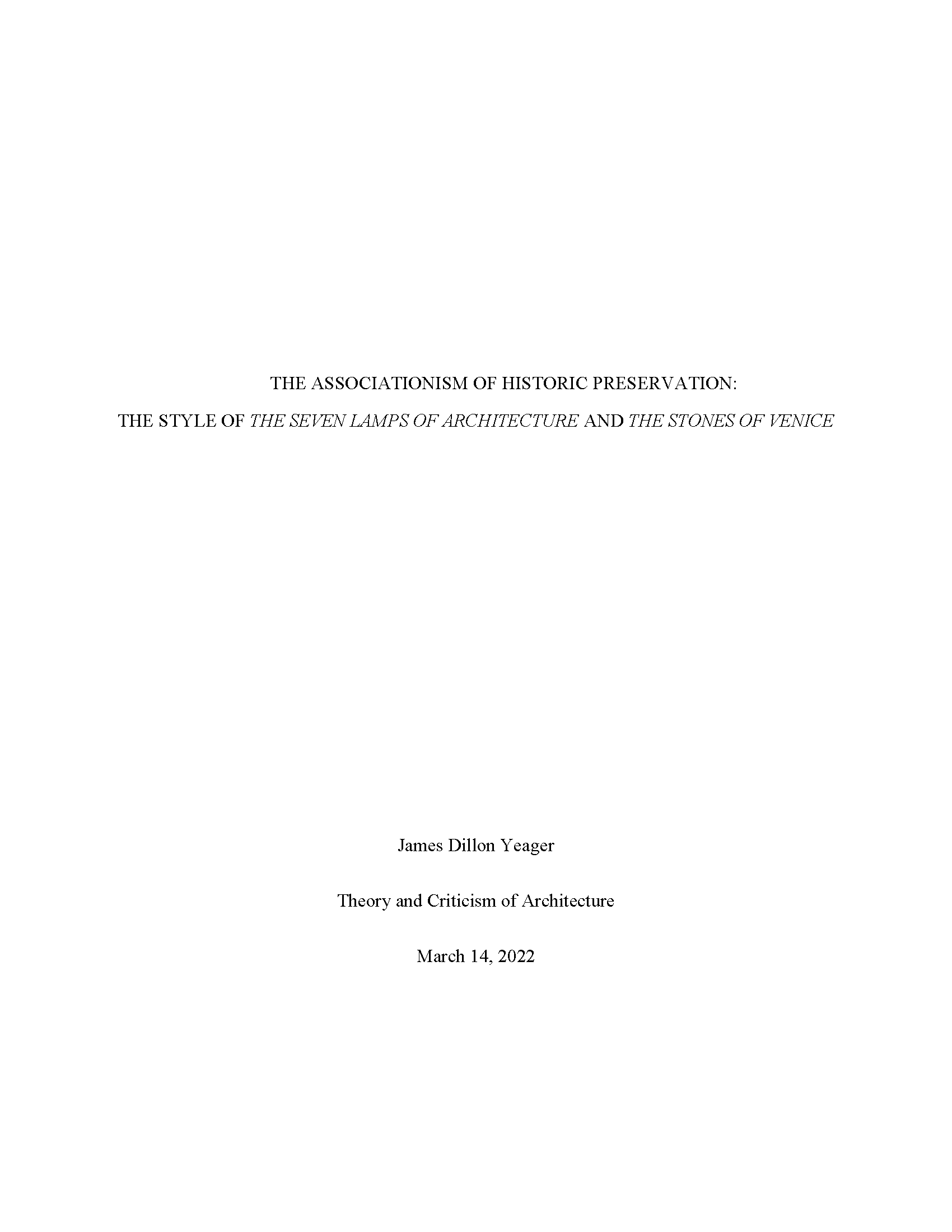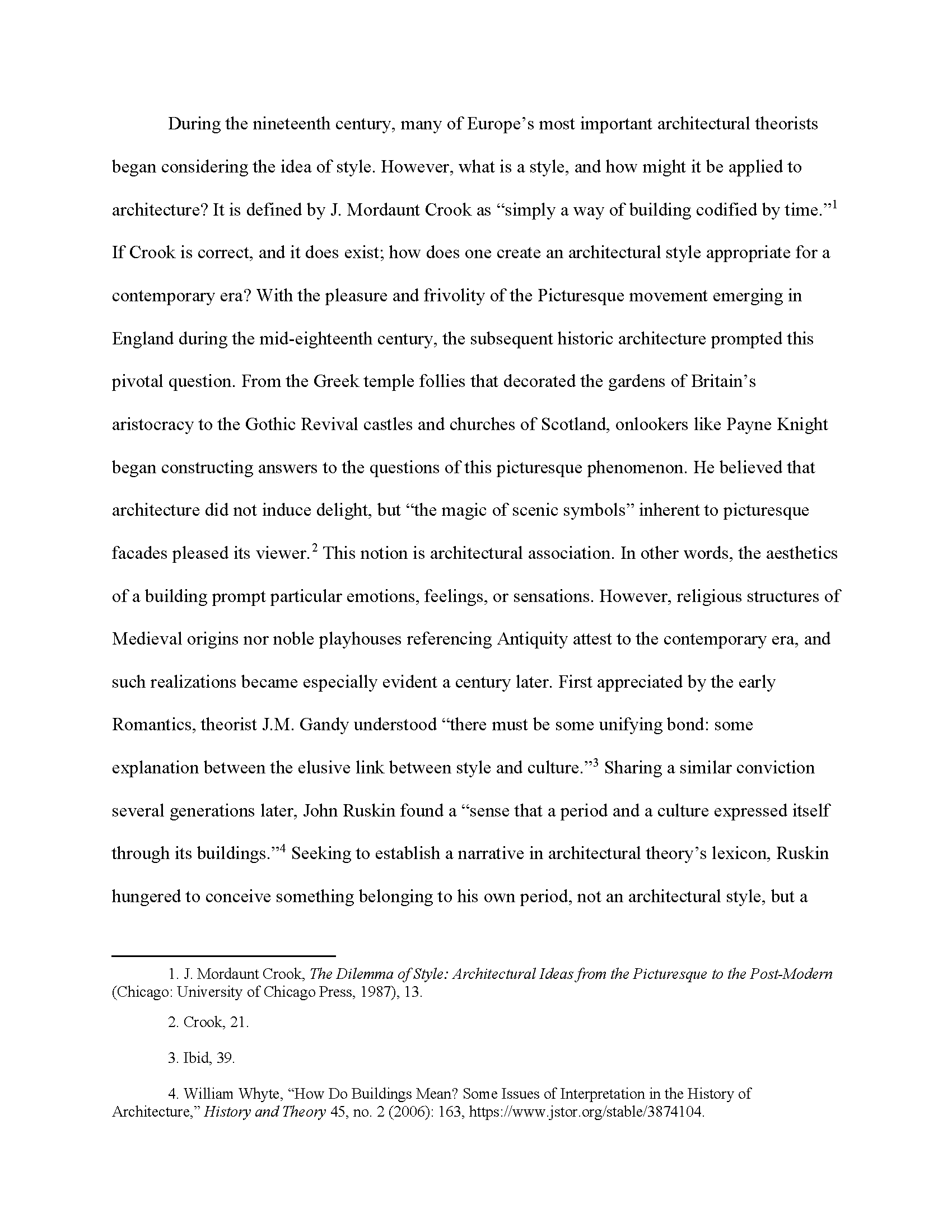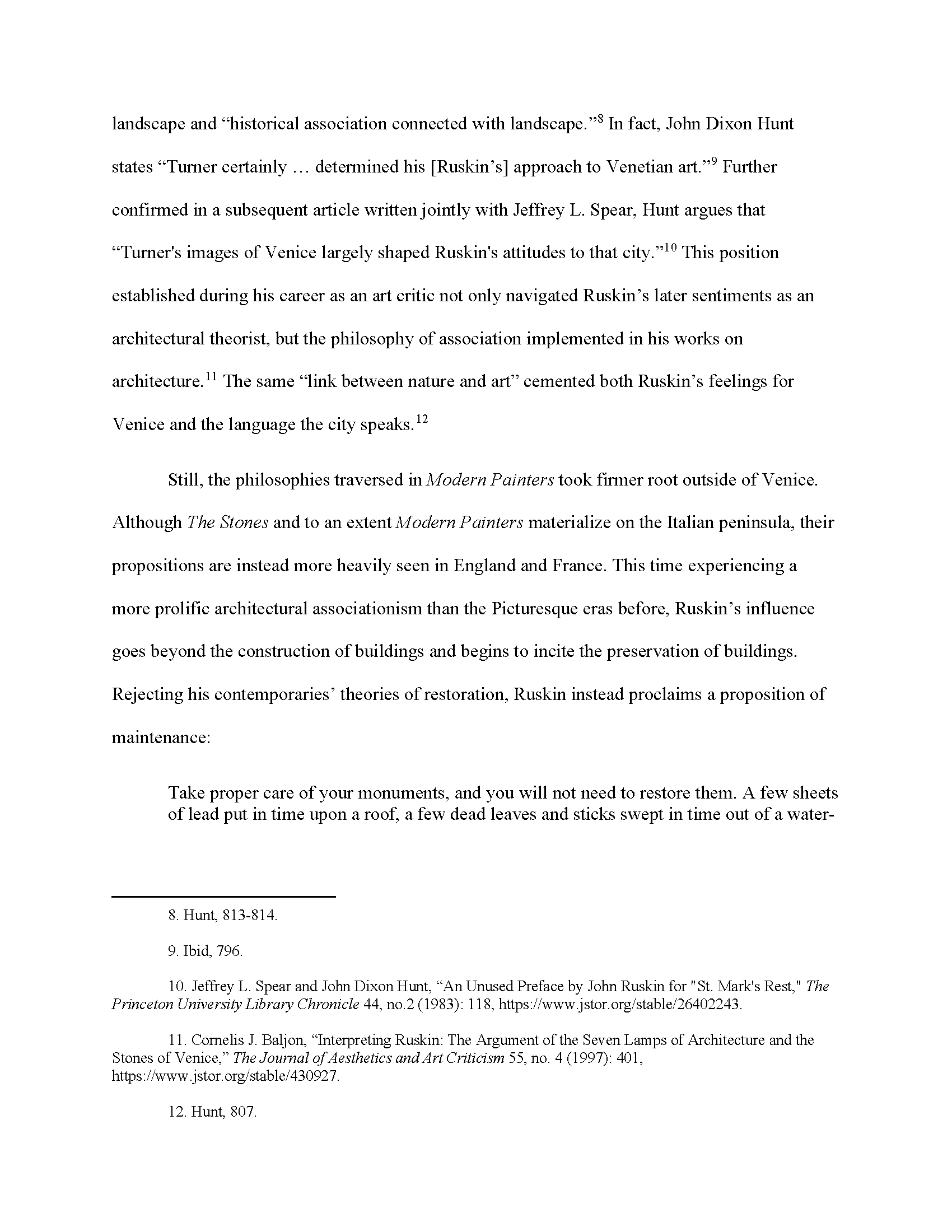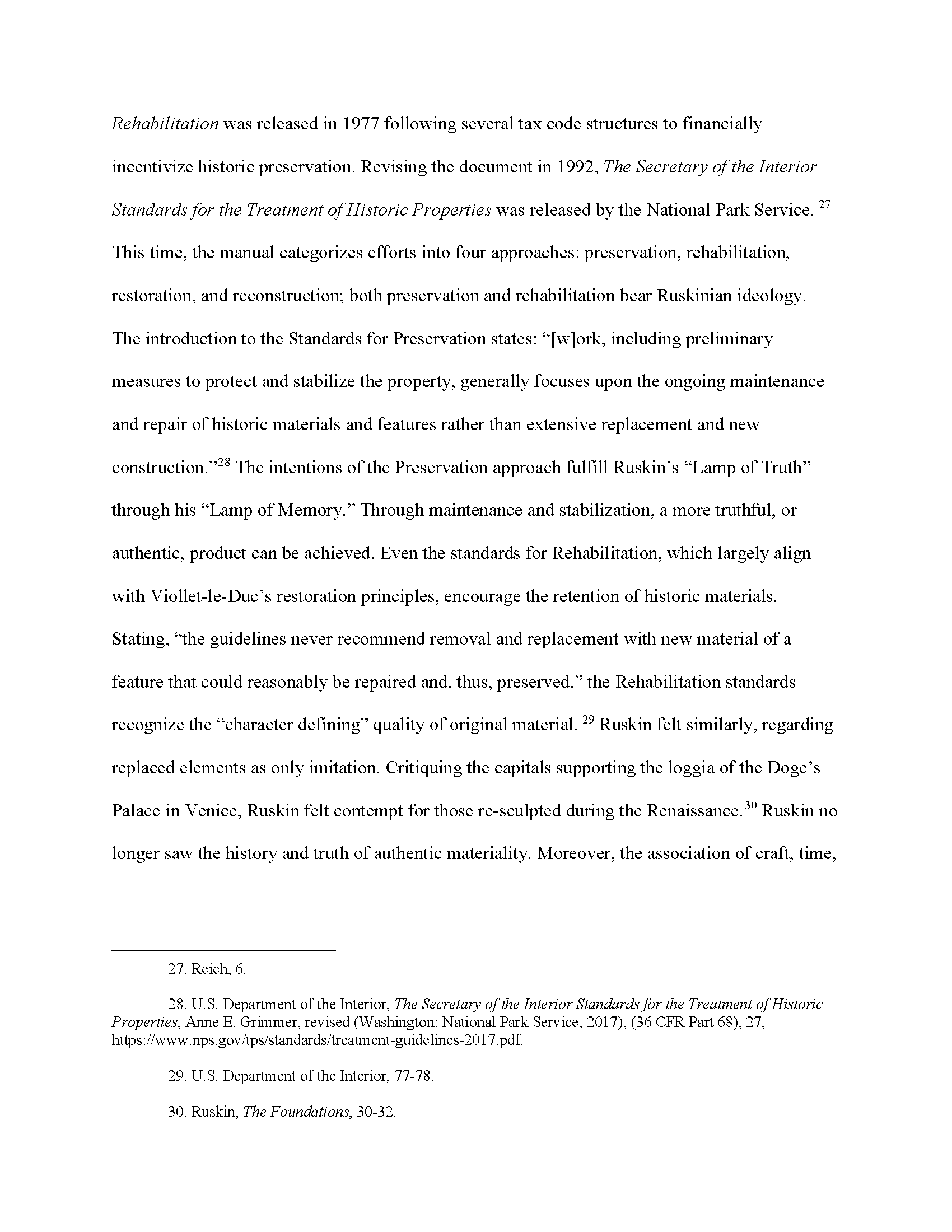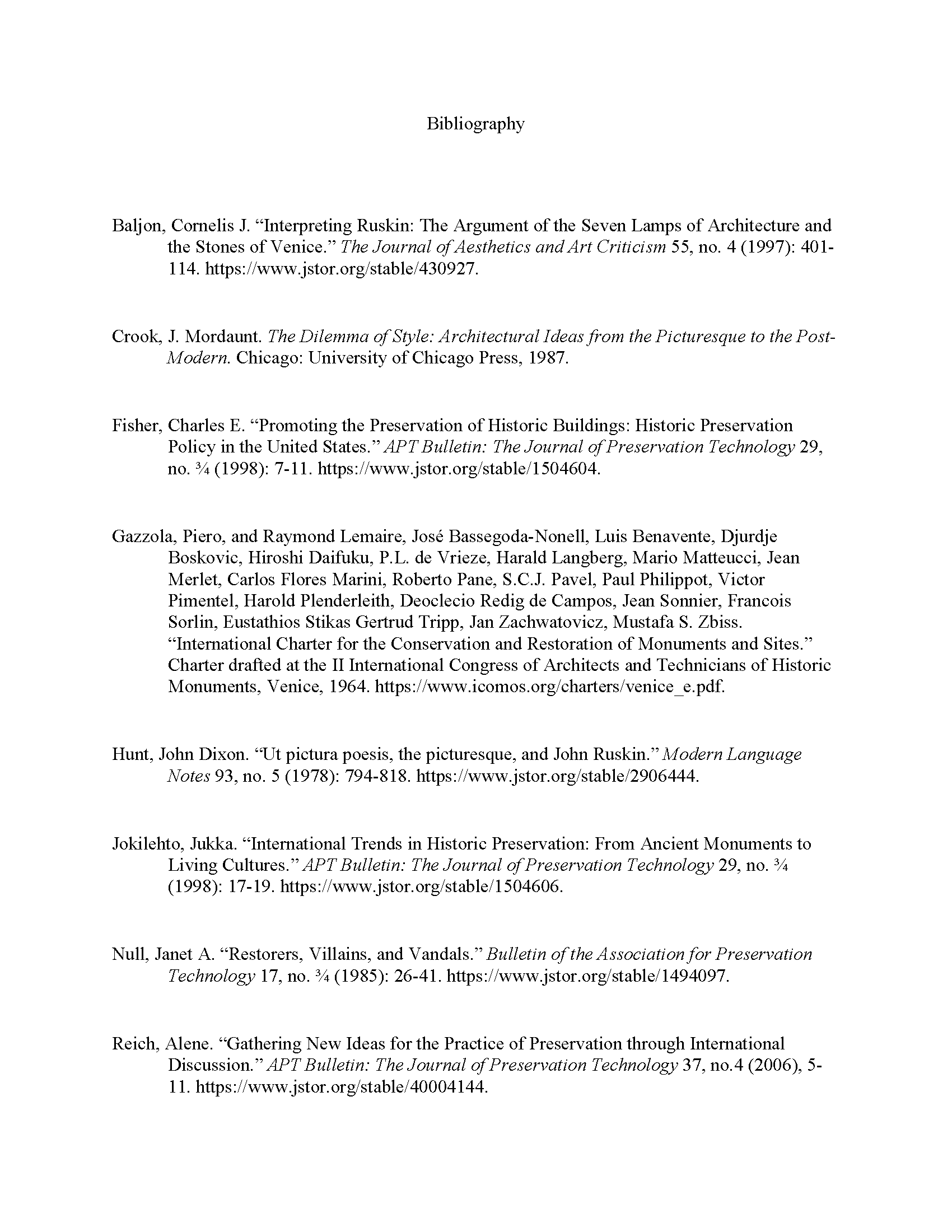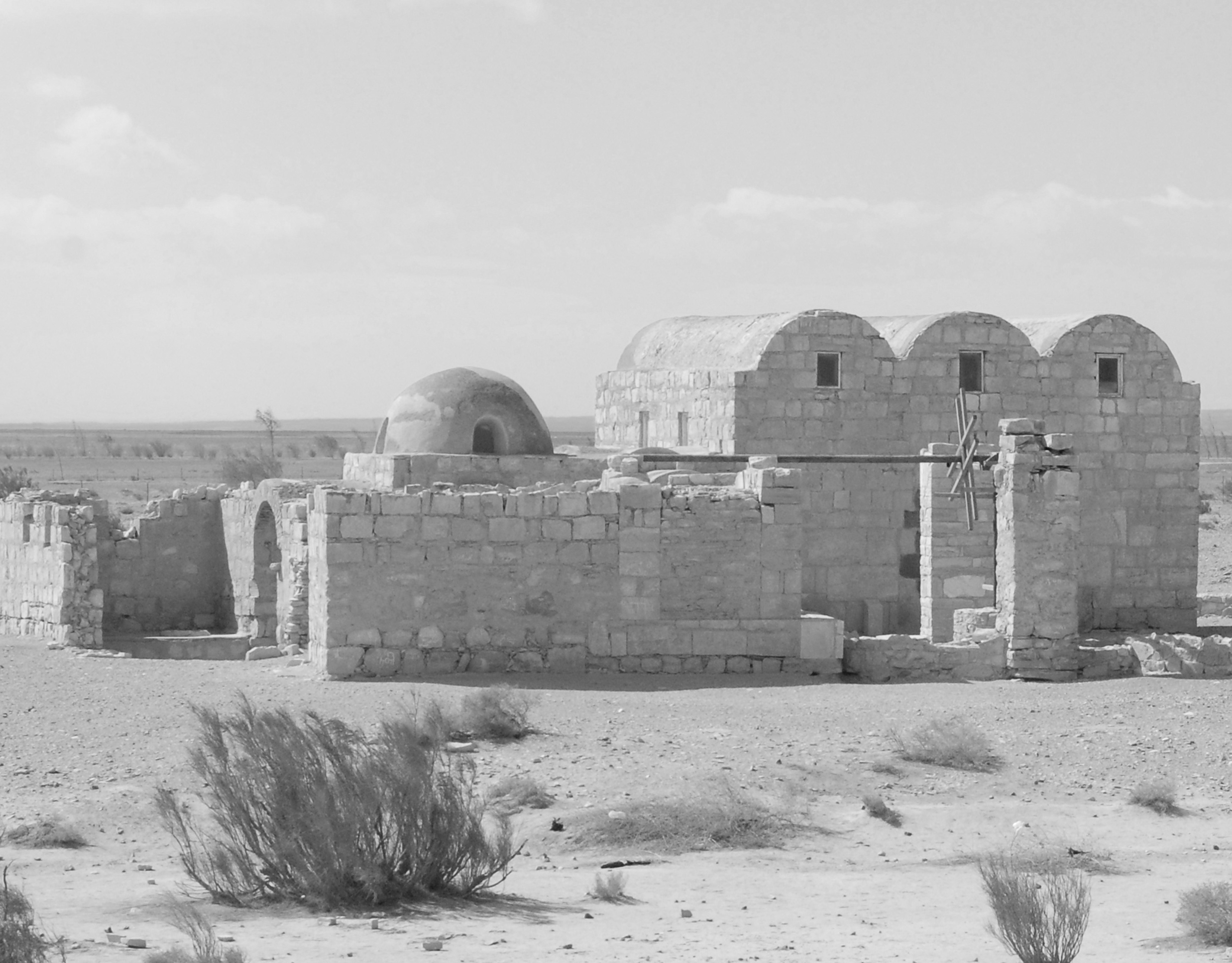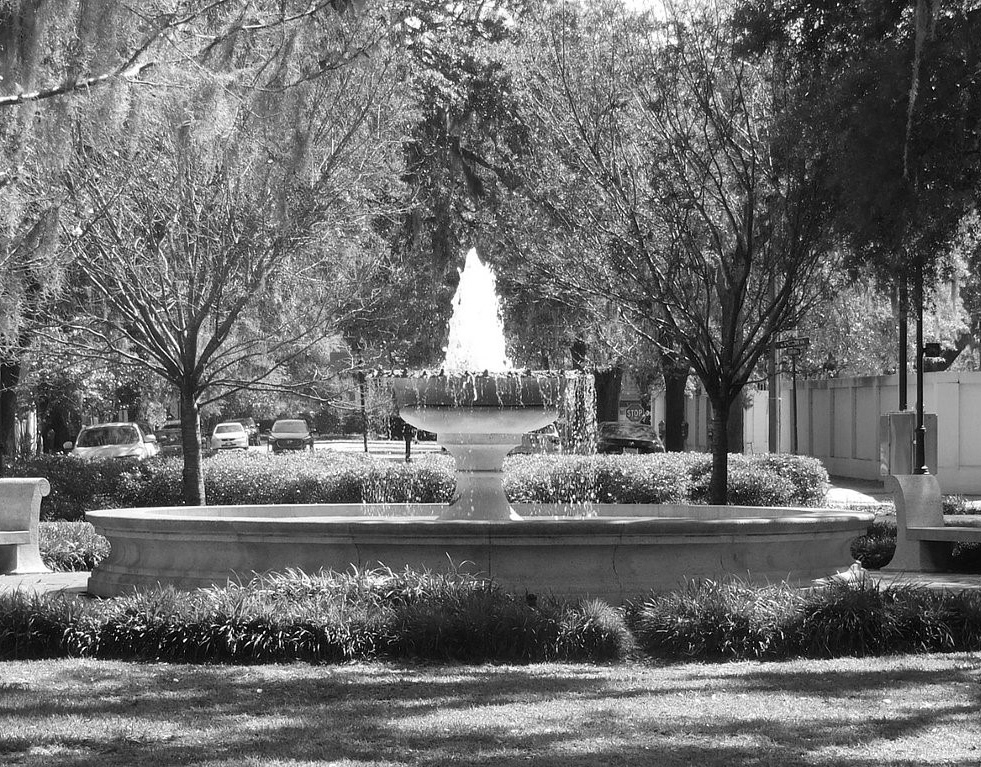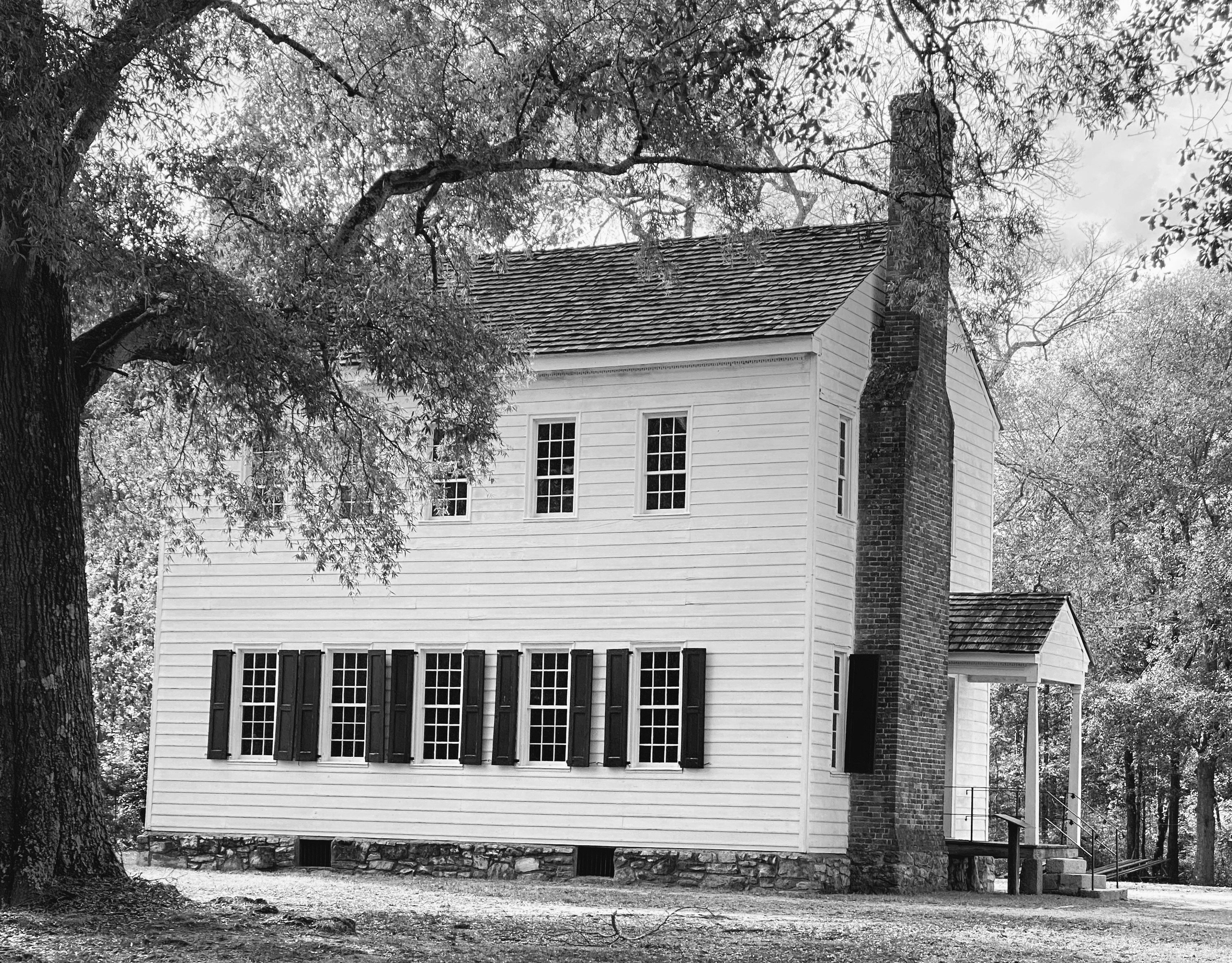"Doge's Palace" by Andrew Balet is licensed under CC BY 3.0
The Associationism of Historic Preservation: The Style of the Seven Lamps of Architecture was written in Dillon's Theory and Criticism of Seminar. During the nineteenth century, many of Europe’s most important architectural theorists began considering the idea of style. However, what is a style, and how might it be applied to architecture? It is defined by J. Mordaunt Crook as “simply a way of building codified by time.” If Crook is correct, and it does exist; how does one create an architectural style appropriate for a contemporary era? Seeking to establish a narrative in architectural theory’s lexicon, John Ruskin similarly hungered to conceive something belonging to his own period, not an architectural style, but a propositional style. Albeit abandoning the favor for Picturesque historic styles, Ruskin’s belief retains the same philosophy. He associates architecture and time; architecture belongs to time, and according to Ruskin, “it is in that golden stain of time” that gives architecture such value. First developed in his 1849 essay, The Seven Lamps of Architecture, Ruskin explains that history and age are the merits that distinguish good architecture. Further applied in his multivolume history The Stones of Venice, Ruskin explores the associationist basis for which nineteenth century European, twentieth century American, and twentieth century global historic preservation practice and policy largely form their theories. Please scroll down to the final paper, The Associationism of Historic Preservation: The Style of the Seven Lamps of Architecture.
They Style of the seven lamps of architecture
